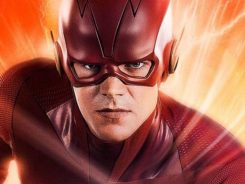How did innovation and technology change life historically?
There were two technological innovations that profoundly changed daily life in the 19th century. They were both “motive powers”: steam and electricity.
Those who lived through these technological changes, felt them to be much more than technological innovations. To them, these technologies seemed to erase the primeval boundaries of human experience and to usher in a kind of Millennial era, a New Age.
Here’s a historical timeline of technological innovations;
| Date | Invention or discovery | Articles on Explain that stuff |
|---|---|---|
| 4–5 billion years ago | Sun starts to produce energy. | Solar cells Energy |
| 10 million years ago. | Humans make the first tools from stone, wood, antlers, and bones. | Tools and machines |
| 1–2 million years ago | Humans discover fire. | Biofuels Candles Car engines Jet engines |
| 25,000– 50,000 BCE | Humans first wear clothes. | Biomimetic clothing |
| 10,000 BCE | Earliest boats are constructed. | Ships and boats |
| 8000– 9000 BCE | Beginnings of human settlements and agriculture. | Biofuels Water |
| 6000– 7000 BCE | Hand-made bricks first used for construction in the Middle East. | Bricks |
| 4000 BCE | Iron used for the first time in decorative ornaments. | Iron and steel |
| 3500 BCE | Humans invent the wheel. | Tools and machines Wheels and axles |
| c1700 BCE | Semites of the Mediterranean develop the alphabet. | Digital pens |
| 0– 1500 BCE | Ancient societies invent some of the first machines for moving water and agriculture. | Tools and machines Water |
| 1000 BCE | Iron Age begins: iron is widely used for making tools and weapons in many parts of the world. | Iron and steel |
| 600 BCE | Thales of Miletus discovers static electricity. | Electricity Static electricity |
| c.150– 100 BCE | Gear-driven, precision clockwork machines (such as the Antikythera mechanism) are in existence. | Clockwork |
| c.50 BCE | Roman engineer Vitruvius perfects the modern, vertical water wheel. | Turbines |
| 62 CE | Hero of Alexandria, a Greek scientist, pioneers steam power. | Steam engines |
| 105 CE | Ts’ai Lun makes the first paper in China. | Paper |
| 27 BCE–395 CE | Romans develop the first, basic concrete called pozzolana. | Steel and concrete |
| ~600 CE | Windmills are invented in the Middle East. | Wind turbines |
| 700– 900 CE | Chinese invent gunpowder and fireworks. | Bullets Fireworks |
| 1000 CE ?? | Chinese develop eyeglasses by fixing lenses to frames that fit onto people’s faces. | Lenses |
| 1450 | Johannes Gutenberg pioneers the modern printing press, using rearrangeable metal letters called movable type. | Printing |
| 1470s | The first parachute is sketched on paper by an unknown inventor. | Parachutes |
| 1530s | Gerardus Mercator helps to revolutionize navigation with better mapmaking. | Satellite navigation |
| 1590 | A Dutch spectacle maker named Zacharias Janssen makes the first compound microscope. | Microscopes Electron microscopes |
| ~1600 | Galileo Galilei designs a basic thermometer. | Thermometer |
| 16th century | Antoni van Leeuwenhoek and Robert Hooke independently develop microscopes. | Microscopes Electron microscopes |
| 1600 | William Gilbert publishes his great book De Magnete describing how Earth behaves like a giant magnet. It’s the beginning of the scientific study of magnetism. | Magnetism |
| 1609 | Galileo Galilei builds a practical telescope and makes new astronomical discoveries. | Space telescopes |
| 1643 | Galileo’s pupil Evangelista Torricelli builds the first mercury barometer for measuring air pressure. | Barometers |
| 1650s | Christiaan Huygens develops the pendulum clock (using Galileo’s earlier discovery that a swinging pendulum can be used to keep time). | Pendulum clocks |
| 1687 | Isaac Newton formulates his three laws of motion. | Motion |
| 1700s | Bartolomeo Cristofori invents the piano. | Pianos |
| 1701 | English farmer Jethro Tull begins the mechanization of agriculture by inventing the horse-drawn seed drill. | Tractors |
| 1703 | Gottfried Leibniz pioneers the binary number system now used in virtually all computers. | How computers work History of computers |
| 1712 | Thomas Newcomen builds the first practical (but stationary) steam engine. | Steam engines |
| 1700s | Christiaan Huygens conceives the internal combustion engine, but never actually builds one. | Car engines |
| 1737 | William Champion develops a commercially viable process for extracting zinc on a large scale. | Zinc |
| 1757 | John Campbell invents the sextant, an improved navigational device that enables sailors to measure latitude. | Satellite navigation |
| 1730s– 1770s | John Harrison develops reliable chronometers (seafaring clocks) that allow sailors to measure longitude accurately for the first time. | Quartz clocks and watches Satellite navigation |
| 1751 | Axel Cronstedt isolates nickel. | Nickel |
| 1756 | Axel Cronstedt notices steam when he boils a rock—and discovers zeolites. | Zeolites |
| 1769 | Wolfgang von Kempelen develops a mechanical speaking machine: the world’s first speech synthesizer. | Speech synthesizers |
| 1770s | Abraham Darby III builds a pioneering iron bridge at a place now called Ironbridge in England. | Bridges |
| ~1780 | Josiah Wedgwood (or Thomas Massey) invents the pyrometer. | Pyrometers |
| 1783 | French Brothers Joseph-Michel Montgolfier and Jacques-Étienne Montgolfier make the first practical hot-air balloon. | Hot-air balloons |
| 1791 | Reverend William Gregor, a British clergyman and amateur geologist, discovers a mysterious mineral that he calls menachite. Four years later, Martin Klaproth gives it its modern name, titanium. | Titanium |
| 1800 | Italian Alessandro Volta makes the first battery (known as a Voltaic pile). | Electricity Batteries |
| 1801 | Joseph-Marie Jacquard invents the automated cloth-weaving loom. The punched cards it uses to store patterns help to inspire programmable computers. | History of computers |
| 1803 | Henry and Sealy Fourdrinier develop the papermaking machine. | Paper |
| 1806 | Humphry Davy develops electrolysis into an important chemical technique and uses it to identify a number of new elements. | Electrolyzers |
| 1807 | Humphry Davy develops the electric arc lamp. | Xenon lamps |
| 1814 | George Stephenson builds the first practical steam locomotive. | Steam engines |
| 1816 | Robert Stirling invents the efficient Stirling engine. | Stirling engines |
| 1820s– 1830s | Michael Faraday builds primitive electric generators and motors. | Electricity generators Electric motors Hub motors |
| 1827 | Joseph Niepce makes the first modern photograph. | Photography Digital cameras |
| 1830s | William Sturgeon develops the first practical electric motor. | Electric motors Hub motors |
| 1830s | Louis Daguerre invents a practical method of taking pin-sharp photographs called Daguerreotypes. | Digital cameras Photography |
| 1830s | William Henry Fox Talbot develops a way of making and printing photographs using reverse images called negatives. | Digital cameras Photography |
| 1830s– 1840s | Charles Wheatstone and William Cooke, in England, and Samuel Morse, in the United States, develop the electric telegraph (a forerunner of the telephone). | Telephones |
| 1836 | Englishman Francis Petit-Smith and Swedish-American John Ericsson independently develop propellers with blades for ships. | Propellers |
| 1839 | Charles Goodyear finally perfects a durable form of rubber (vulcanized rubber) after many years of unsuccessful experimenting. | Rubber |
| 1840s | Scottish physicist James Prescott Joule outlines the theory of the conservation of energy. | Energy Great physics experiments |
| 1840s | Scotsman Alexander Bain invents a primitive fax machine based on chemical technology. | Fax machines |
| 1849 | James Francis invents a water turbine now used in many of the world’s hydropower plants. | Turbines Water |
| 1850s | Henry Bessemer pioneers a new method of making steel in large quantities. | Iron and steel |
| 1850s | Louis Pasteur develops pasteurization: a way of preserving food by heating it to kill off bacteria. | Pasteurization |
| 1850s | Italian Giovanni Caselli develops a mechanical fax machine called the pantelegraph. | Fax machines |
| 1860s | Frenchman Étienne Lenoir and German Nikolaus Otto pioneer the internal combustion engine. | Car engines Cars, history of |
| 1860s | James Clerk Maxwell figures out that radio waves must exist and sets out basic laws of electromagnetism. | Radio |
| 1860s | Fire extinguishers are invented. | Fire extinguisher |
| 1861 | Elisha Graves Otis invents the elevator with built-in safety brake. | Elevators |
| 1867 | Joseph Monier invents reinforced concrete. | Reinforced concrete |
| 1868 | Christopher Latham Sholes invents the modern typewriter and QWERTY keyboard. | Typewriters |
| 1876 | Alexander Graham Bell patents the telephone, though the true ownership of the invention remains controversial even today. | Telephones |
| 1870s | Thomas Edison develops the phonograph, the first practical method of recording and playing back sound on metal foil. | CD players MP3 players |
| 1870s | Lester Pelton invents a useful new kind of water turbine known as a Pelton wheel. | Turbines |
| 1877 | Thomas Edison invents his sound-recording machine or phonograph—a forerunner of the record player and CD player. | Record players Sound |
| 1877 | Edward Very invents the flare gun (Very pistol) for sending distress flares at sea. | Flares |
| 1880 | Thomas Edison patents the modern incandescent electric lamp. | Incandescent lamps |
| 1880 | Pierre and Paul-Jacques Curie discover the piezoelectric effect. | Piezoelectricity |
| 1880s | Thomas Edison opens the world’s first power plants. | Power plants |
| 1880s | Charles Chamberland invents the autoclave (steam sterilizing machine). | Autoclaves |
| 1880s | Charles and Julia Hall and Paul Heroult independently develop an affordable way of making aluminum. | Aluminum |
| 1880s | Carrie Everson invents new ways of mining silver, gold, and copper. | Copper Gold Silver |
| 1881 | Jacques d’Arsonval suggests heat energy could be extracted from the oceans. | OTEC (Ocean Thermal Energy Conversion) |
| 1883 | Charles Eastman invents plastic photographic film. | Digital cameras Plastics |
| 1884 | Charles Parsons develops the steam turbine. | Steam turbines Turbines |
| 1885 | Karl Benz builds a gasoline-engined car. | Car engines |
| 1886 | Josephine Cochran invents the dishwasher. | Dishwashers |
| 1888 | Friedrich Reinitzer discovers liquid crystals. | LCD screens and displays |
| 1888 | Nikola Tesla patents the alternating current (AC) electric induction motor and, in opposition to Thomas Edison, becomes a staunch advocate of AC power. | Electricity Electric motors Induction motors Power plants |
| 1899 | Everett F. Morse invents the optical pyrometer for measuring temperatures at a safe distance. | Pyrometers |
| 1890s | French brothers Joseph and Louis Lumiere invent movie projectors and open the first movie theater. | Camcorders Projection TV |
| 1890s | German engineer Rudolf Diesel develops his diesel engine—a more efficient internal combustion engine without a sparking plug. | Diesel engines |
| 1895 | German physicist Wilhelm Röntgen discovers X rays. | X rays |
| 1895 | American Ogden Bolton, Jr. invents the electric bicycle. | Electric bikes |
| 1901 | Guglielmo Marconi sends radio-wave signals across the Atlantic Ocean from England to Canada | Radio |
| 1901 | The first electric vacuum cleaner is developed. | Vacuum cleaners |
| 1903 | Brothers Wilbur and Orville Wright build the first engine-powered airplane. | Airplanes Jet engines |
| 1905 | Albert Einstein explains the photoelectric effect. | Photoelectric cells |
| 1905 | Samuel J. Bens invents the chainsaw. | Chainsaws |
| 1906 | Willis Carrier pioneers the air conditioner. | Air conditioners |
| 1906 | Mikhail Tswett discovers chromatography. | Chromatography |
| 1907 | Leo Baekeland develops Bakelite, the first popular synthetic plastic. | Plastics |
| 1907 | Alva Fisher invents the electric clothes washer. | Clothes washer |
| 1906-8 | Frederick Gardner Cottrell develops the electrostatic smoke precipitator (smokestack pollution scrubber). | Air pollution Electrostatic smoke precipitators |
| 1908 | American industrialist and engineer Henry Ford launches the Ford Model T, the world’s first truly affordable car. | Car engines Cars, history of |
| 1909 | German chemists Fritz Haber and Zygmunt Klemensiewicz develop the glass electrode, enabling very precise measurements of acidity. | pH meters |
| 1912 | American chemist Gilbert Lewis describes the basic chemistry that leads to practical, lithium-ion rechargeable batteries (though they don’t appear in a practical, commercial form until the 1990s). | Lithium-ion batteries |
| 1912 | Hans Geiger develops the Geiger counter, a detector for radioactivity. | Geiger counters |
| 1919 | Francis Aston pioneers the mass spectrometer and uses it to discover many isotopes. | Mass spectrometers |
| 1920s | John Logie Baird develops mechanical television. | Television LCD TV |
| 1920s | Philo T. Farnsworth invents modern electronic television. | Television LCD TV |
| 1920s | Robert H. Goddard develops the principle of the modern, liquid-fueled space rocket. | Bullets Space rockets |
| 1920s | German engineer Gustav Tauschek and American Paul Handel independently develop primitive optical character recognition (OCR) scanning systems. | OCR |
| 1920s | Albert W. Hull invents the magnetron, a device that can generate microwaves from electricity. | Magnetrons Microwave ovens |
| 1921 | Karel Capek and his brother coin the word “robot” in a play about artificial humans. | Robots |
| 1921 | John Larson develops the polygraph (“lie detector”) machine. | Polygraphs |
| 1928 | Thomas Midgley, Jr. invents coolant chemicals for air conditioners and refrigerators. | Air conditioners Refrigerators |
| 1928 | The electric refrigerator is invented. | Refrigerators |
| 1930s | Peter Goldmark pioneers color television. | Television LCD TV |
| 1930s | Laszlo and Georg Biro pioneer the modern ballpoint pen. | Digital pens |
| 1930s | Maria Telkes creates the first solar-powered house. | Eco homes Solar cells |
| 1930s | Wallace Carothers develops neoprene (synthetic rubber used in wetsuits) and nylon, the first popular synthetic clothing material. | Kevlar Nomex Nylon Wetsuits |
| 1930s | Robert Watson Watt oversees the development of radar. | Radar |
| 1930s | Arnold Beckman develops the electronic pH meter. | pH meters |
| 1931 | Harold E. Edgerton invents the xenon flash lamp for high-speed photography. | Xenon lamps |
| 1932 | Arne Olander discovers the shape memory effect in a gold-cadmium alloy. | Shape memory alloys |
| 1936 | W.B. Elwood invents the magnetic reed switch. | Reed switches |
| 1938 | Chester Carlson invents the principle of photocopying (xerography). | Photocopiers |
| 1938 | Roy Plunkett accidentally invents a nonstick plastic coating called Teflon. | Gore-Tex Nonstick pans |
| 1939 | Igor Sikorsky builds the first truly practical helicopter. | Helicopters |
| 1940s | English physicists John Randall and Harry Boot develop a compact magnetron for use in airplane radar navigation systems. | Magnetrons Radar |
| 1942 | Enrico Fermi builds the first nuclear chain reactor at the University of Chicago. | Nuclear power |
| 1945 | US government scientist Vannevar Bush proposes a kind of desk-sized memory store called Memex, which has some of the features later incorporated into electronic books and the World Wide Web (WWW). | Electronic books World Wide Web |
| 1947 | John Bardeen, Walter Brattain, and William Shockley invent the transistor, which allows electronic equipment to made much smaller and leads to the modern computer revolution. | Amplifiers Electronics History of computers Transistors |
| 1949 | Bernard Silver and N. Joseph Woodland patent barcodes—striped patterns that are initially developed for marking products in grocery stores. | Barcodes and barcode scanners |
| 1950s | Charles Townes and Arthur Schawlow invent the maser (microwave laser). Gordon Gould coins the word “laser” and builds the first optical laser in 1958. | Lasers |
| 1950s | Stanford Ovshinksy develops various technologies that make renewable energy more practical, including practical solar cells and improved rechargeable batteries. | Batteries Electric bicycles Electric cars Solar cells |
| 1950s | European bus companies experiment with using flywheels as regenerative brakes | Flywheels |
| 1950s | Percy Spencer accidentally discovers how to cook with microwaves, inadvertently inventing the microwave oven. | Microwave ovens |
| 1954 | Indian physicist Narinder Kapany pioneers fiber optics. | Fiber optics Endoscopes |
| 1956 | First commercial nuclear power is produced at Calder Hall, Cumbria, England. | Nuclear power plants |
| 1957 | Soviet Union (Russia and her allies) launch the Sputnik space satellite. | Satellites |
| 1957 | Lawrence Curtiss, Basil Hirschowitz, and Wilbur Peters build the first fiber-optic gastroscope. | Endoscopes |
| 1958 | Jack Kilby and Robert Noyce, working independently, develop the integrated circuit. | History of computers integrated circuits Transistors |
| 1959 | IBM and General Motors develop Design Augmented by Computers-1 (DAC-1), the first computer-aided design (CAD) system. | Computer graphics |
| 1960s | Joseph-Armand Bombardier perfects his Ski-Doo® snowmobile. | Snowmobiles |
| 1960 | Theodore Maiman invents the ruby laser. | Lasers |
| 1962 | William Armistead and S. Donald Stookey of Corning Glass Works invent light-sensitive (photochromic) glass. | Photochromic lenses |
| 1963 | Ivan Sutherland develops Sketchpad, one of the first computer-aided design programs. | Computer graphics |
| 1964 | IBM helps to pioneer e-commerce with an airline ticket reservation system called SABRE. | E-commerce |
| 1965 | Frank Pantridge develops the portable defibrillator for treating cardiac arrest patients. | Defibrillators |
| 1966 | Stephanie Kwolek patents a super-strong plastic called Kevlar. | Kevlar |
| 1967 | Japanese company Noritake invents the vacuum fluorescent display (VFD). | Vacuum fluorescent displays |
| 1968 | Alfred Y. Cho and John R. Arthur, Jr invent a precise way of making single crystals called molecular beam epitaxy (MBE). | Molecular beam epitaxy |
| 1969 | World’s first solar power station opened in France. | Solar cells Energy |
| 1969 | Long before computers become portable, Alan Kay imagines building an electronic book, which he nicknames the Dynabook. | Electronic books |
| 1969 | Willard S. Boyle and George E. Smith invent the CCD (charge-coupled device): the light-sensitive chip used in digital cameras, webcams, and other modern optical equipment. | CCDs Digital cameras |
| 1969 | Astronauts walk on the Moon. | Space rockets |
| 1960s | Douglas Engelbart develops the computer mouse. | Computer mouse |
| 1960s | James Russell invents compact discs. | CD players |
| 1971 | Electronic ink is pioneered by Nick Sheridon at Xerox PARC. | Electronic ink and paper |
| 1971 | Ted Hoff builds the first single-chip computer or microprocessor. | History of computers |
| 1973 | Martin Cooper develops the first handheld cellphone (mobile phone). | Cellphones |
| 1973 | Robert Metcalfe figures out a simple way of linking computers together that he names Ethernet. Most computers hooked up to the Internet now use it. | Computer networks Internet |
| 1974 | First grocery-store purchase of an item coded with a barcode. | Barcodes and barcode scanners |
| 1975 | Whitfield Diffie and Martin Hellman invent public-key cryptography. | Encryption |
| 1975 | Pico Electronics develops X-10 home automation system. | Smart homes |
| 1976 | Steve Wozniak and Steve Jobs launch the Apple I: one of the world’s first personal home computers | History of computers |
| 1970s– 1980s | James Dyson invents the bagless, cyclonic vacuum cleaner. | Vacuum cleaners |
| 1970s-1980s | Scientists including Charles Bennett, Paul Benioff, Richard Feynman, and David Deutsch sketch out how quantum computers might work. | Quantum computers |
| 1980s | Japanese electrical pioneer Akio Morita develops the Sony Walkman, the first truly portable player for recorded music. | CD players MP3 players |
| 1981 | Stung by Apple’s success, IBM releases its own affordable personal computer (PC). | History of computers |
| 1981 | The Space Shuttle makes its maiden voyage. | Space Shuttle |
| 1981 | Patricia Bath develops laser eye surgery for removing cataracts. | Lasers |
| 1981– 1982 | Alexei Ekimov and Louis E. Brus (independently) discover quantum dots. | Quantum dots |
| 1983 | Compact discs (CDs) are launched as a new way to store music by the Sony and Philips corporations. | CD players |
| 1987 | Larry Hornbeck, working at Texas Instruments, develops DLP® projection—now used in many projection TV systems. | DLP® projectors |
| 1989 | Tim Berners-Lee invents the World Wide Web. | Internet World Wide Web |
| 1990 | German watchmaking company Junghans introduces the MEGA 1, believed to be the world’s first radio-controlled wristwatch. | Radio-controlled clocks Quartz clocks and watches |
| 1991 | Linus Torvalds creates the first version of Linux, a collaboratively written computer operating system. | Computers Linux |
| 1994 | American-born mathematician John Daugman perfects the mathematics that make iris scanning systems possible. | Iris scans |
| 1994 | Israeli computer scientists Alon Cohen and Lior Haramaty invent VoIP for sending telephone calls over the Internet. | VoIP |
| 1995 | Broadcast.com becomes one of the world’s first online radio stations. | Streaming media |
| 1995 | Pierre Omidyar launches the eBay auction website. | E-commerce |
| 1996 | WRAL-HD broadcasts the first high-definition television (HDTV) signal in the United States. | HDTV |
| 1997 | Electronics companies agree to make Wi-Fi a worldwide standard for wireless Internet. | Wireless Internet |
| 2001 | Apple revolutionizes music listening by unveiling its iPod MP3 music player. | MP3 players |
| 2001 | Richard Palmer develops energy-absorbing D3O plastic. | Energy-absorbing materials |
| 2001 | The Wikipedia online encyclopedia is founded by Larry Sanger and Jimmy Wales. | Electronic books |
| 2001 | Bram Cohen develops BitTorrent file-sharing. | BitTorrent Internet |
| 2001 | Scott White, Nancy Sottos, and colleagues develop self-healing materials. | Self-healing materials |
| 2002 | iRobot Corporation releases the first version of its Roomba® vacuum cleaning robot. | Roomba Robots |
| 2004 | Electronic voting plays a major part in a controversial US Presidential Election. | Touchscreens |
| 2004 | Andre Geim and Konstantin Novoselov discover graphene. | Graphene |
| 2005 | A pioneering low-cost laptop for developing countries called OLPC is announced by MIT computing pioneer Nicholas Negroponte. | Computers |
| 2007 | Amazon.com launches its Kindle electronic book (e-book) reader. | Electronic books |
| 2007 | Apple introduces a touchscreen cellphone called the iPhone. | Cellphones Touchscreens |
| 2010 | Apple releases its touchscreen tablet computer, the iPad. | Computers Touchscreens |
| 2010 | 3D TV starts to become more widely available. | 3D Television Television |
| 2013 | Elon Musk announces “hyperloop”—a giant, pneumatic tube transport system. | Pneumatic transport tube |
| 2015 | Supercomputers (the world’s fastest computers) are now a mere 30 times less powerful than human brains. | Supercomputers |
| 2016 | Three nanotechnologists win the Nobel Prize in Chemistry for building miniature machines out of molecules. | Nanotechnology |






















